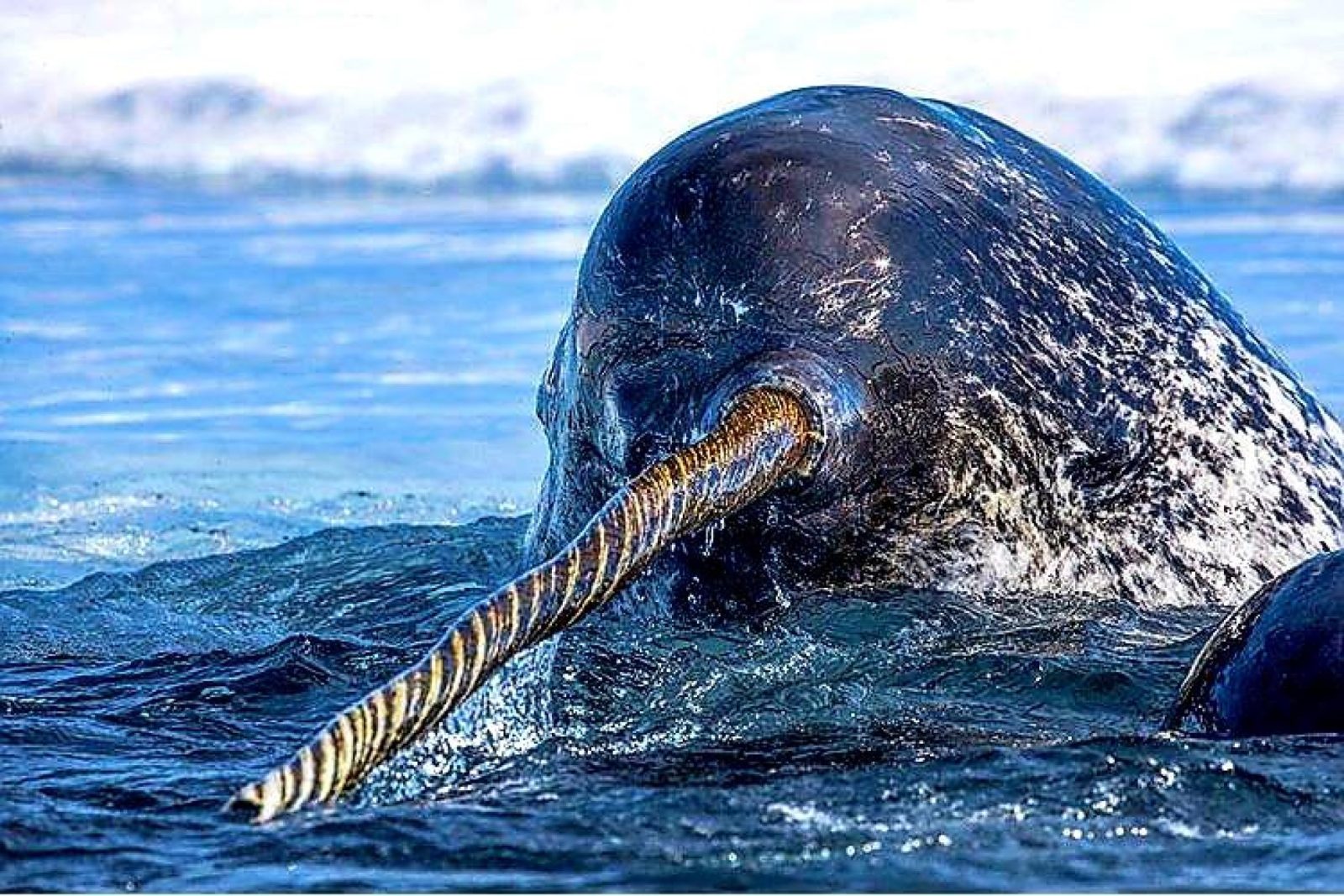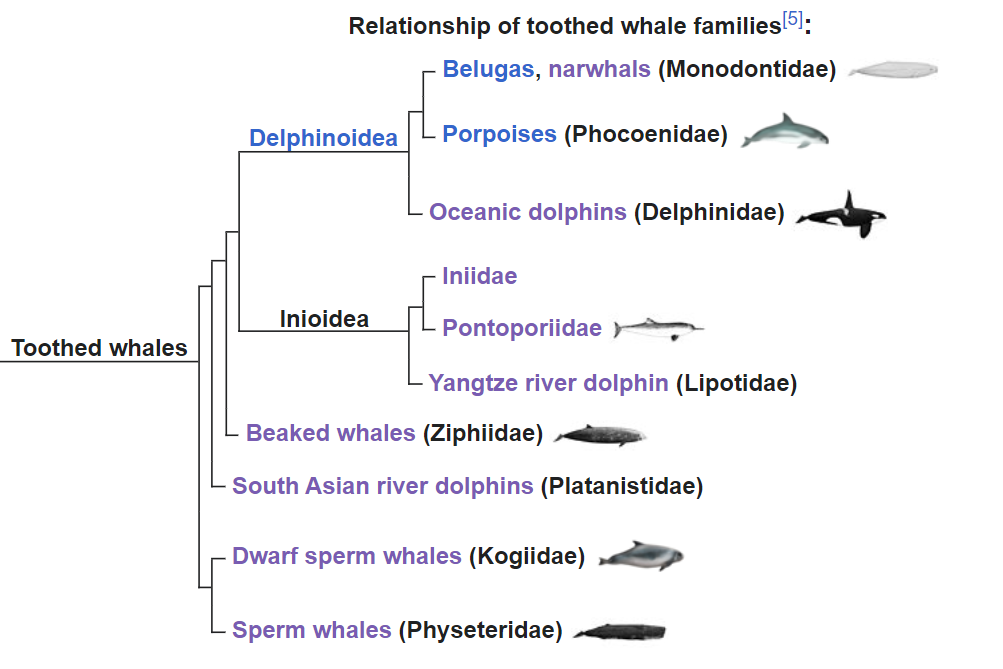
Narwhal
Generally, the source of any so called unicorn horns, they have a tooth that can extend more than 3m from their mouths and some have 2. Most recent populations suggest around 170,000, Induit from Canada and Greenland have hunted them for both meat and ivory.
They migrate in winter, and much of their food comes from Arctic cod and Greenland Halibut and live around 50 years. Young narwhals are predated by both Polar bears at breathing holes and Greenland sharks.
They are essentially an odd looking species of dolphin. There are around 123,000 individuals, living in 12 different groups in areas around the arctic.


